Science Daily - 16-May-2014

Exploding supernovae are a phenomenon that is still not fully understood. The trouble is that the state of nuclear matter in stars cannot be reproduced on Earth. Scientists have now developed a new model of supernovae represented as dynamical systems subject to a loss of stability, just before they explode. Because similar stability losses also occur in dynamical systems in nature, this model could...
Science Daily - 16-May-2014

Recent Hubble observations confirm that Jupiter's Great Red Spot, a swirling storm feature larger than Earth, has shrunken to the smallest size astronomers have ever measured. Jupiter's Great Red Spot is a churning anticyclonic storm. ...
Science Daily - 16-May-2014

Using one of the world's largest telescopes, astronomers have tracked the orbit of a planet at least four times the size of Jupiter. The scientists were able to identify the orbit of the exoplanet, Beta Pictoris b, which sits 63 light years from our solar system, by using the Gemini Planet Imager's (GPI) next-generation, high-contrast adaptive optics (AO) system. This approach is sometimes referred...
Universe Today - 16-May-2014
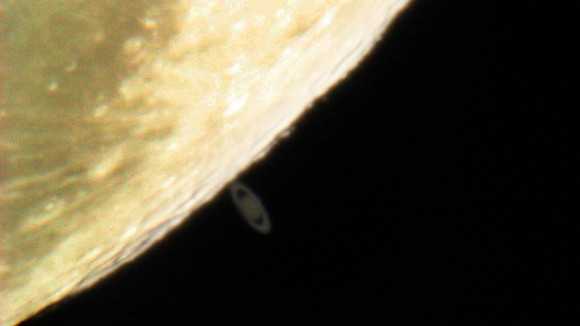
Observers in Australia and New Zealand had a special treat this week: watching Saturn disappear behind the Moon during an event called an occultation. (You can read all the details of how and why this happens here in our preview article.) Catching an event like this with a camera is tricky… the bright Moon can […]...
Universe Today - 16-May-2014
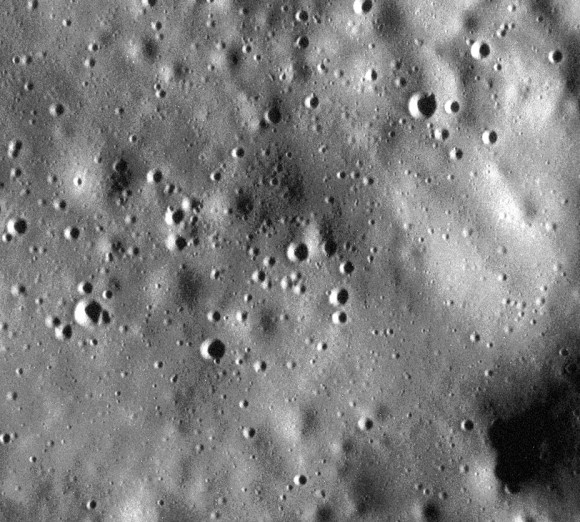
Are you ready for a good close look at Mercury? At an incredible 5 meters per pixel, this is one of the highest-resolution images of Mercury’s surface ever captured. It was acquired on March 15 with the MESSENGER spacecraft’s MDIS (Mercury Dual Imaging System) instrument and shows an 8.3-km (5.2-mile) -wide section of Mercury’s north polar region, […]...
Astronomy Magazine - 16-May-2014
Comet 67P/Churyumov-Gerasimenko has started to reveal its true personality as a comet, its dusty veil clearly developing over the last six weeks. ...
Astronomy Magazine - 16-May-2014
The observations were able to “see” approximately 33–50 feet below the lunar surface. ...
Universe Today - 16-May-2014
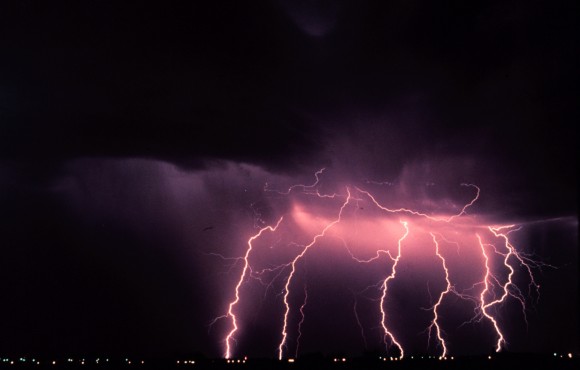
As the northern hemisphere enters the hazy days of summer, thunderstorms will freckle many of our nights and days. What causes these sudden bursts of light that flash through the sky? Previous research showed that one cause is cosmic rays from space, generated by supernovas. But a new paper shows that something much closer and […]...
Universe Today - 16-May-2014
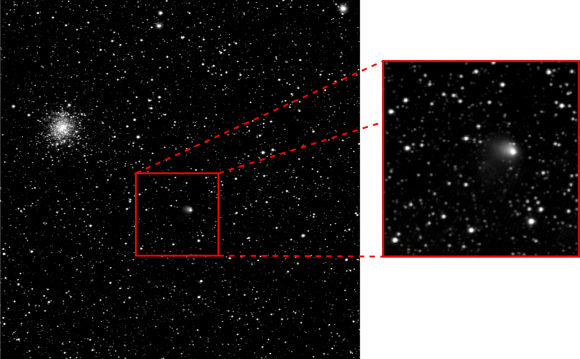
Wow! This image shows the target comet for the Rosetta mission starting to develop a tail. This bodes well for the European Space Agency spacecraft, which is on its way to study Comet 67P/Churyumov–Gerasimenko later this year to learn more about the origins of the solar system. “It’s beginning to look like a real comet,” stated […]...
Universe Today - 16-May-2014
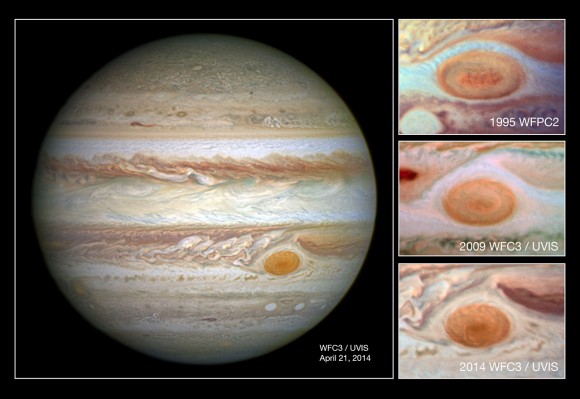
Earlier this year we reported that amateur astronomers had observed and photographed the recent shrinking of Jupiter’s iconic Great Red Spot. Now, astronomers using the Hubble Space Telescope concur: “Recent Hubble Space Telescope observations confirm that the spot is now just under 10,250 miles (16,500 km) across, the smallest diameter we’ve ever measured,” said Amy Simon...
Science Daily - 15-May-2014

This past November, NASA launched the Mars Atmosphere and Volatile Evolution (MAVEN) mission in the hope of understanding how and why the planet has been losing its atmosphere over billions of years. ...
Universe Today - 15-May-2014
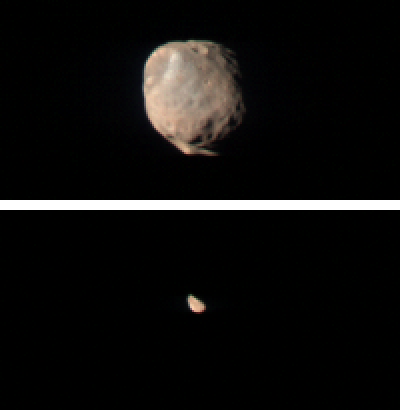
Where did Mars’ moons Phobos and Deimos come from? How did they end up in orbit around Mars? This cool video from the folks at Kurzgesagt answers the most-oft asked questions about these mini moons. You should also check out their other wonderful videos, like the one about our own Moon, below, which explains how […]...
Universe Today - 15-May-2014
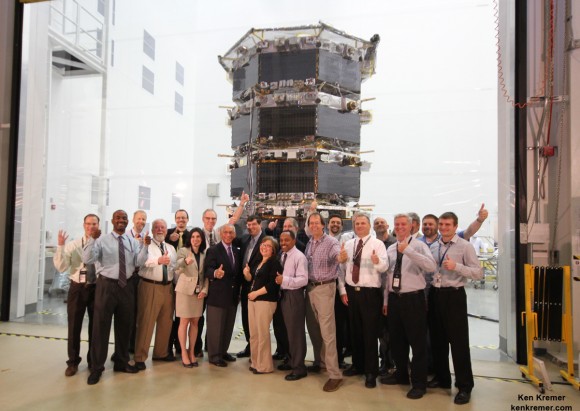
NASA GODDARD SPACE FLIGHT CENTER, MD – NASA’s upcoming Magnetospheric Multiscale (MMS) mission is comprised of a quartet of identically instrumented observatories aimed at providing the first three-dimensional views of a fundamental process in nature known as magnetic reconnection. They were unveiled to greet NASA Administrator Charles Bolden on Monday, May 12, in a rare […]...
Astronomy Magazine - 15-May-2014
GU Psc b, a gas giant, has been added to the list of exoplanets discovered through direct imaging. ...
Astronomy Magazine - 15-May-2014
A team of astronomers believes they have found the partner star of a magnetar for the first time. ...
Science Daily - 15-May-2014

Scientists have discovered new evidence to suggest that lightning on Earth is triggered not only by cosmic rays from space, but also by energetic particles from the sun. Researchers found a link between increased thunderstorm activity on Earth and streams of high-energy particles accelerated by the solar wind, offering compelling evidence that particles from space help trigger lightning bolts. ...
Science Daily - 15-May-2014

Magnetars are the bizarre super-dense remnants of supernova explosions. They are the strongest magnets known in the universe — millions of times more powerful than the strongest magnets on Earth. Astronomers now believe they’ve found the partner star of a magnetar for the first time. This discovery helps to explain how magnetars form — a conundrum dating back 35 years — and why this particular star...
Universe Today - 15-May-2014
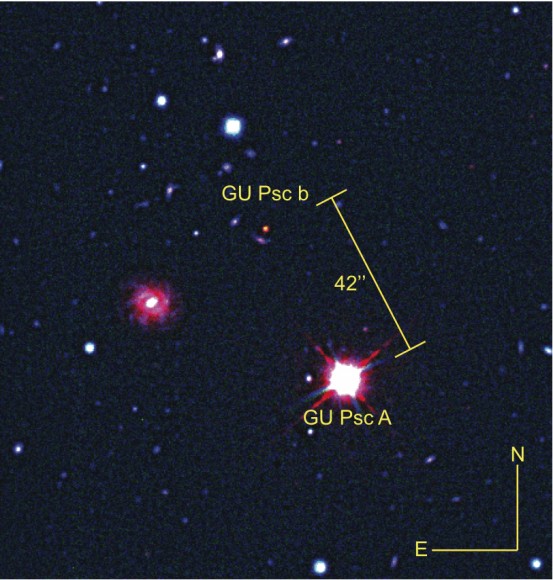
Chalk up another benchmark in the fascinating and growing menagerie of extra-solar planets. This week, an international team of researchers from the Université de Montréal announced the discovery of an exoplanet around the star GU Piscium in the constellation of Pisces the Fishes 155 light years distant. Known as GU Psc b, this world is […]...
Science Daily - 14-May-2014

A gas giant has been added to the short list of exoplanets discovered through direct imaging. It is located around GU Psc, a star three times less massive than the Sun and located in the constellation Pisces. ...
Science Daily - 14-May-2014

Astrophysicists have measured the minute gravitational distortions in polarized radiation from the early universe and discovered that these ancient microwaves can provide an important cosmological test of Einstein's theory of general relativity. ...
















